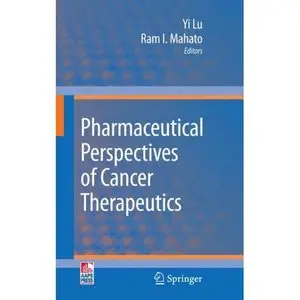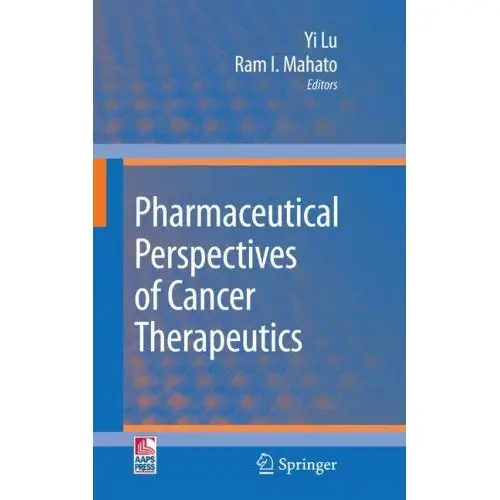Pharmaceutical Perspectives of Cancer Therapeutics by Yi Lu and Ram I. Mahato
English | 2009 | ISBN: 1441901302 | 602 pages | PDF | 10,5 MB
English | 2009 | ISBN: 1441901302 | 602 pages | PDF | 10,5 MB
The goal of our efforts in compiling Pharmaceutical Perspectives of Cancer Therapeutic is to produce a comprehensive yet easy-to-follow review of the principles and current approaches in this ever-growing field.
With today’s broad research perspective and technology expertise, the knowledge in the field of cancer research and drug development has become a challenge not only for students who are eager to learn, but also for seasoned professionals who are willing to update. The complexity of cancer demands a comprehensive and integrated understanding from both cancer biology and pharmaceuticaldosage forms and drug delivery in order to warrant a successful therapeutic regimen. However, no book to date combinestogether these two aspects, namely the cancer research and the drug design and delivery from an integrated perspective of cancer treatment. Hence, a book that merges the knowledge from these two aspects is greatly desired.
For the purpose of bridging basic research and clinical application, pharmaceutical drug development processes and regulatory issues, drug design and delivery, laboratory and translational experimentation, marketing and postmarketing surveillance,we have invited international experts with a multi-disciplinary background, including scientists and clinicians from both academia and industries in theirrespective fields to contribute to this book. We intend to convey both an introductory understanding and the latest development in the field so that this book can be useful for both novice students and practicing scientists. With a comprehensive and integrated view of cancer therapeutics, we hope that this book will stimulate a deeper understanding and promote interaction in this integrated field for people with diverse expertise and backgrounds who are working on cancer therapeutics.
We have organized this book to cover a wide variety of topics including strategies to suppress tumor angiogenesis and metastasis, overcome multi-drug resistance in cancer, target telomerase and apoptosis pathways;therapeutic approaches to employ monoclonal antibody and cancer vaccines;introduction of new concepts such as cancer stem cells and new technologies such as nanobiotechnology, RNA interference, microRNA, and cancer cell gene profiling. The use of synthetic carriers, such as lipids, polymers and peptides for delivery and targeting of small molecules, proteins and nucleic acids to cancer cells or specific organs in vivo, as well as targeted delivery of macromolecular drugs to cancer cells, are described in detail. In addition, the utilization of imaging in cancer therapeutics, development and utilization of HIF-1 knockout animal models in cancer study, as well as the principles of developing anticancer drugs and designing clinical trials, are also discussed. In summary, this book provides an in-depth review of various aspects of anticancer strategies and drug delivery approaches from different perspectives, including detailed discussion of several clinical trial cases. The book has a wider and more involved focus on cancer therapy with a good balance on diversity. It integrates cancer therapy approaches (both biological- and small compound molecule-based therapy) with drug delivery. By reading this book, not only bench scientists can have an insight for what physicians desire for their clinical use towards cancer treatment, but also physicians will better understand how the approach and drug are developed and therefore will apply the drug more efficiently and accurately in patients. Moreover, this book summarizes current progress and state-of-the-art of cancer therapeutics, while focusing on the novel ideas that are being explored to overcome the existing challenges. We hope that this book will be served as both a refresher and ready-reference, as well as an educational tool, to both new entrants and seasoned researchers.



